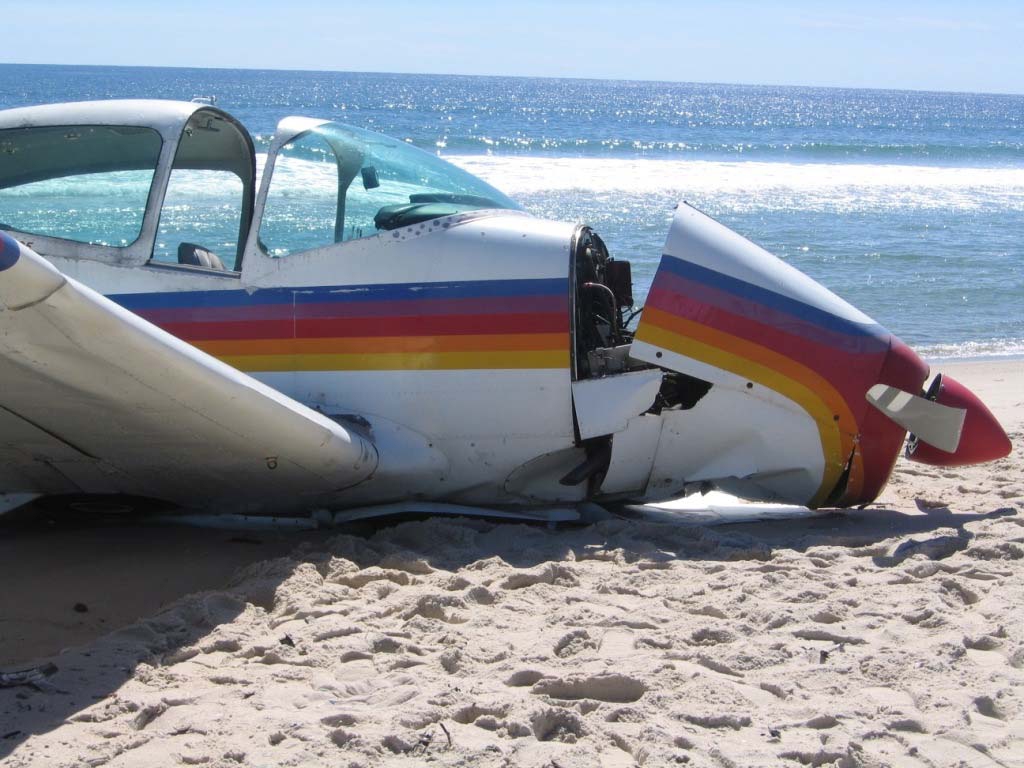
ASN Wikibase Occurrence # 68306
This information is added by users of ASN. Neither ASN nor the Flight Safety Foundation are responsible for the completeness or correctness of this information.
If you feel this information is incomplete or incorrect, you can submit corrected information.
| Date: | Sunday 20 September 2009 |
| Time: | 10:10 |
| Type: |  Ryan Navion |
| Owner/operator: | Private |
| Registration: | N4467K |
| MSN: | NAV-4-1467 |
| Total airframe hrs: | 4000 hours |
| Engine model: | Continental E225 |
| Fatalities: | Fatalities: 0 / Occupants: 3 |
| Aircraft damage: | Substantial |
| Category: | Accident |
| Location: | Fire Island Beach, New York -
 United States of America United States of America
|
| Phase: | En route |
| Nature: | Private |
| Departure airport: | Kingstown, RI (OQU) |
| Wildwood, NJ (WWD) | |
| Investigating agency: | NTSB |
| Confidence Rating: |
According to the pilot, the airplane was equipped with three fuel tanks: one main tank in each wing and an auxiliary tank in the fuselage. Each tank had a capacity of approximately 20 gallons. Prior to his departure, the pilot filled the auxiliary fuel tank and determined that there was a total of approximately 25 gallons in the main tanks. During cruise, about 55 minutes into the cross-country flight, the pilot decided to switch from the main wing tanks to the auxiliary tank. In accordance with the normal operating procedure, the pilot first turned on the fuel boost pump and then switched the fuel selector valve to the auxiliary tank. Very shortly thereafter the engine lost all power. The pilot immediately switched the fuel selector valve back to the main tanks. Although all controls were set properly, the engine did not resume developing power and the pilot’s restart attempts were unsuccessful. The pilot then executed a forced landing on a nearby beach. Postaccident examination and testing revealed that the cork gasket in the fuel strainer was deteriorated, did not provide a proper seal, and allowed air to be introduced into the fuel system when the selector valve was switched to the auxiliary tank. The investigation could not determine the age of the gasket or whether it was the correct part. The airplane had accumulated about 5 hours in service since the fuel selector valve was replaced, and the airplane had not been flown using fuel from the auxiliary tank since the valve replacement.
Probable Cause: A total loss of engine power during cruise flight due to fuel starvation as a result of a deteriorated fuel gasket.
Accident investigation:
 |
|
Sources:
NTSB
Location
Images:

Photo: FAA
Revision history:
| Date/time | Contributor | Updates |
|---|---|---|
| 21-Sep-2009 02:58 | slowkid | Added |
| 21-Sep-2009 03:01 | slowkid | Updated |
| 30-Dec-2010 15:50 | harro | Updated [Time, Departure airport, Destination airport, Source, Narrative] |
| 21-Dec-2016 19:25 | ASN Update Bot | Updated [Time, Damage, Category, Investigating agency] |
| 02-Dec-2017 16:16 | ASN Update Bot | Updated [Other fatalities, Departure airport, Destination airport, Source, Narrative] |
Corrections or additions? ... Edit this accident description
The Aviation Safety Network is an exclusive service provided by:


 ©2024 Flight Safety Foundation
©2024 Flight Safety Foundation